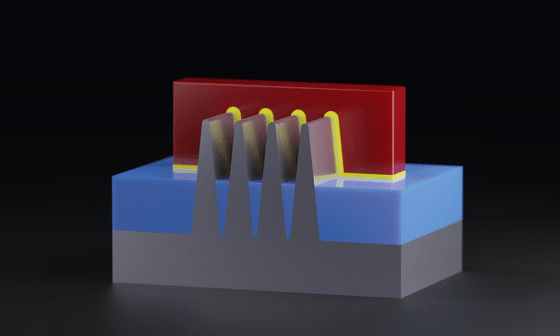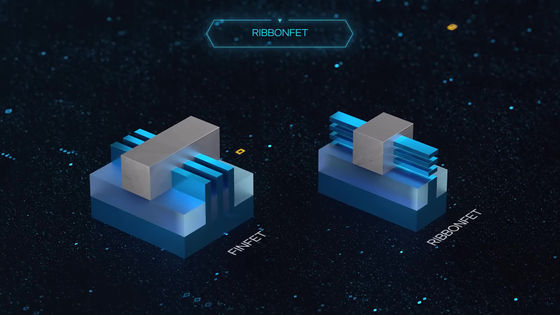What are the 'two cutting-edge technologies' on which Intel is betting its company's fortunes, aiming to regain the lead in 2024?

Intel, which has lagged behind TSMC and Samsung in advanced chip manufacturing, is aiming for a bold comeback with its ``Arrow Lake'' desktop and laptop chip scheduled for release at the end of 2024. IEEE Spectrum, a technical magazine of the Institute of Electrical and Electronics Engineers of America, explains the two innovative technologies 'RibbonFET' and 'PowerVia' that are expected to be introduced in the next process node 'Intel 20A' that supports Intel's cutting-edge chips. did.
In 2024, Intel Hopes to Leapfrog Its Chipmaking Competitors - IEEE Spectrum
Intel is a leader in chip manufacturing and has led the semiconductor industry for many years, but in 2018, the delay in transitioning to the 10nm process node surfaced, disrupting chip manufacturing plans, and in 2020 Trials continue, such as stumbling on the 7nm process node and being forced to restart as 'Intel 4'.
Intel, aiming to recover, is focusing on the transistor architecture ``RibbonFET'' that will replace the current ``FinFET.'' Conventional FinFET technology has achieved lower power consumption and improved logic circuit density by increasing the number of surfaces in contact between the channel and gate from one to three surfaces, but as miniaturization progresses, the current control ability has reached its limit. It's starting to happen.

RibbonFETs, on the other hand, have a gate that completely wraps around the channel, providing much better control. According to Intel, if RibbonFET is introduced into Intel 20A, it will improve energy efficiency by up to 15%. The 'A' in the next process node, Intel 20A, is taken from

IEEE Spectrum's even more dramatic technology is a new power supply method called 'PowerVia.' PowerVia is generally referred to as backside power supply technology, and as the name suggests, it is classified as a technology that runs power wiring on the backside of the board. On conventional boards, the power supply wiring and signal wiring placed on only one side compete for resources, but by separating these, performance will improve by 6%.
Intel compares traditional wafers, which pack all the necessary elements on one side, to a pizza and declares, 'We're not making pizza anymore.'
Intel successfully tests ``PowerVia'', a backside power supply technology that restarts ``Moore's Law'', and Intel claims to be ``two years ahead of its rivals'' and ``stop making pizza'' - GIGAZINE

To avoid falling further behind with the introduction of RibbonFET and PowerVia, the two technologies will be introduced at the same time. Normally, development plans for these technologies proceed in 10-year increments, but as the realization of RibbonFET and PowerVia approached, Intel realized that the two timelines would intersect. Therefore, in order to avoid having one technology wait for the other, Intel decided to position the two technologies as two wheels of a car.
Intel says it will be ready to manufacture Intel 20A in the first half of 2024. TSMC, on the other hand, plans to begin production of the next generation of N2 nanosheets using the 2nm process in early 2025, and to begin production of N2P chips equipped with backside power supply technology by 2026. Meanwhile, Samsung has already introduced 3nm node nanosheet transistors in 2022, but has not disclosed when to implement backside power supply technology.
Dan Hutchison of TechInsights, a technology consultancy specializing in semiconductor technology, believes that all semiconductor companies will aim to adopt backside power supply technology, and if Intel is the first to do so, it will once again be a key driver in the semiconductor industry. I think it is possible for us to return to the top.
'Intel used to be a conservative company, while TSMC was an aggressive risk taker and often missed the mark,' Hutchison said. 'Now the situation is reversed. Two big innovations at once. It's a very risky move to try to do that, and it's led to big failures in the past.'
Related Posts:
in Hardware, Posted by log1l_ks






